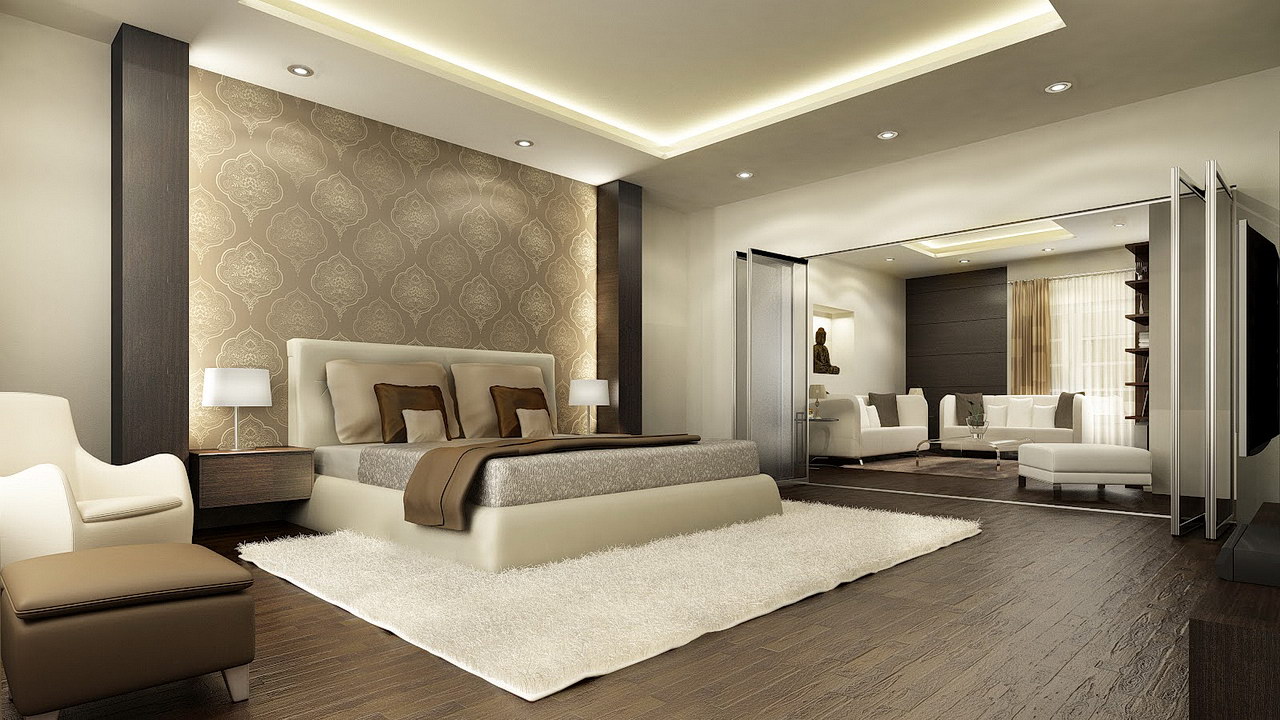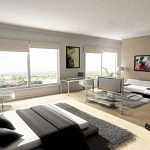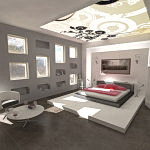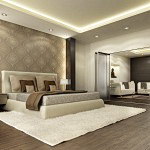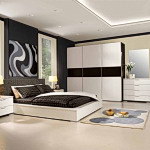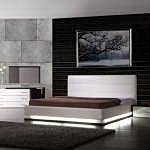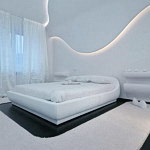In the dark about bedside lamps? Waffling over pillows at the store? Try these ideas for a more comfortable bedroom
We’ve probably all looked at a particular room in our house and thought there was something missing. That thought can be particularly annoying when you’re looking at your master bedroom. After all, it’s hard to relax when you have the nagging feeling that the place that’s supposed to be your sanctuary needs help.
If you’re in the mood to build a better bedroom, you might start with this advice from the experts.
The Rug
Few sensations are more jarring than swinging your feet out of bed only to hit a cold, hard floor. But rugs are expensive, which ups the ante on a decision that’s already tricky. Where should you place it? Are there rules for how it should sit under your furniture? How big should it be?
California interior designer Jerry Jacobs recommends taking a deep breath, throwing out any preconceived notions of “the rules” and instead concentrating on how you’ll use the space.
Take this room, for example. Notice how Jacobs placed the rug so it created a border around the bed where his clients could walk, but didn’t bring the rug all the way back to the wall behind the bed?
“When you get out of bed, you sit down, so the rug is somewhat unnecessary any further than the nightstands,” Jacobs explains.
He also points out that the expense of buying an area rug can also be a factor — not only for placement, but also for rug size and type. So get creative! Place smaller rugs alongside your bed, use a runner at the foot of your bed or play with a rug’s position to make it seem larger.
A Place to Sit
Whether your children like to help you choose your outfits or you’re looking for a private place where you can lounge, a chair or chaise can be a useful piece in a master bedroom.
This space actually belongs to a pair of sisters whose parents gave them the master so they’d have enough space. Jacobs used color-blocked chaise longues to pull in the color scheme.
Of course, not everyone has such a large master bedroom. If you’re struggling to include a chair in your smaller space, Jacobs suggests using a swivel chair that can easily move as you pass by.
You might also choose to conserve space by placing a chaise, bench or even a love seat at the foot of the bed. Jacobs points out that this is yet another opportunity to get creative. For example, place a pair of ottomans at the foot of your bed, as in this space.
Just one rule of thumb: Ideally, any piece placed at the foot of the bed should be slightly narrower than the bed itself to expose the corners.
Mirrors
While it’s nice to be able to check your reflection before stepping out to greet the day, both placement and size can be tricky when using mirrors in the bedroom. “A lot of people don’t want to be in bed and see themselves,” says Ivonne Ronderos with DKOR Interiors in North Miami.
To solve this problem, Ivonne’s design team favors smoky or tinted mirrors, so that people sitting up in bed don’t have to see their image staring back.
Ronderos also points out that placement is key. Her team likes to hang mirrors directly to the right and left of the headboard, so people can catch glimpses of themselves when they walk by, but not necessarily when they’re in bed.
Wherever you place your mirror, Ronderos stresses that you should pay particular attention to what you’re reflecting. “If you’re pointing at a toilet, you’re just doubling up your toilet,” she says. Aim for a window, a piece of artwork or a gorgeous piece of furniture you wouldn’t mind seeing more of.
Read more: Roof Windows
Throw Pillows
We’ve all been guests in someone’s house and spent the last few minutes before bed creating a leaning tower of throw pillows. “Right now I think less is more,” says Ronderos. “But you do need a bit of volume.”
She suggests playing with texture, color and size by testing out different pillow groupings within the actual space. “Go to a store that takes returns and buy a lot,” says Ronderos. “I’ll buy double the pillows that I need and then I’ll play with it and return what I don’t need. It’s much harder to make the decision at the store.”
Bedside Storage
“A drawer is a must,” says Jay Britto of Britto Charette Interiors in Miami. A piece with even a single drawer helps you discreetly hide the bedtime necessities that can quickly create clutter atop your nightstand, whether those include a tube of hand lotion or a well-worn copy of 50 Shades of Grey.
As for the exact number of drawers, Jen Horstman of Martha O’Hara Interiors in Minneapolis prefers pieces with either one drawer and one shelf, or three drawers, as those numbers help create balance within the space. If your space is too small for a pair of nightstands, Britto says just one is fine, although he prefers to balance it with a floor lamp, stool or tray table on the other side.
Horstman likes to keep small spaces feeling airy by installing clear, floating, wall-mounted shelving next to a bed to act as nightstands. “Another creative solution is to utilize floor lamps that have a built-in tray surrounding the post,” she says. “Storage and lighting in one!”
A Curated Bedside Collection
While bedside storage is important, there are also some items you’ll want to display. “The rule of thumb is: Keep it minimal and beautiful. A stack of books with a bowl of flowers, a vintage clock, an artful coaster for a lovely glass,” says Horstman. “Small, beautiful pieces that create a feeling of well-being. The drawer is for the rest.”
Britto likes to place a decorative box on top of the nightstand when a drawer might not be an option. This way, small items like remote controls, jewelry and lotion are contained, keeping the space clutter free.
Bedside Lamps
Whether you regularly rise before dark or like to read until dawn, it’s important that the area next to your bed is well lit by a proper-size lamp. Horstman says the height of the lamps should be dictated by the height of the mattress and nightstand, and by how you like to use the space. If you like to read or work in bed, you’ll want to place the light source higher to shed more light.
You’ll also need to pay attention to the lamp’s shade. “The shape of the shade is dictated by the size and shape of the lamp, and should both soften the light and frame the headboard,” says Horstman, who tends to use 60-watt bulbs in the bedroom. That light “is bright enough to read by and soft enough to not be glaring,” she says.
Sex Appeal
Your boudoir plays an important part in the spicy side of your life, so don’t be afraid to add some extra kick. Britto likes to play toward the sensual side of sex appeal by using soft, silky wall coverings in the master suite, as with this quilted headboard. He also stresses the importance of keeping your lighting flexible, so you can set the mood when the moment finally arrives.
“When it comes to lighting, we always use dimmers, either on the portable lamps or chandeliers and general ceiling lights,” he says.
Source: http://www.houzz.com/
You may also like:
- Paola Navone’s Industrial Style Renovation in Italy
- Best IKEA Living Room Designs
- 58 Custom Luxury Master Bedroom Designs
- Inexpensive Home Decorating Ideas – 11 Tips and Ideas
- Living Room Colour Ideas and Schemes In Exquistie 23 Design…
- Bedroom Sets and Furniture
- Stylish Bedrooms Furniture
- Reduce your bathroom renovation costs
- Bathroom renovation ideas and trends
- Bathroom Remodel
Table of Contents
